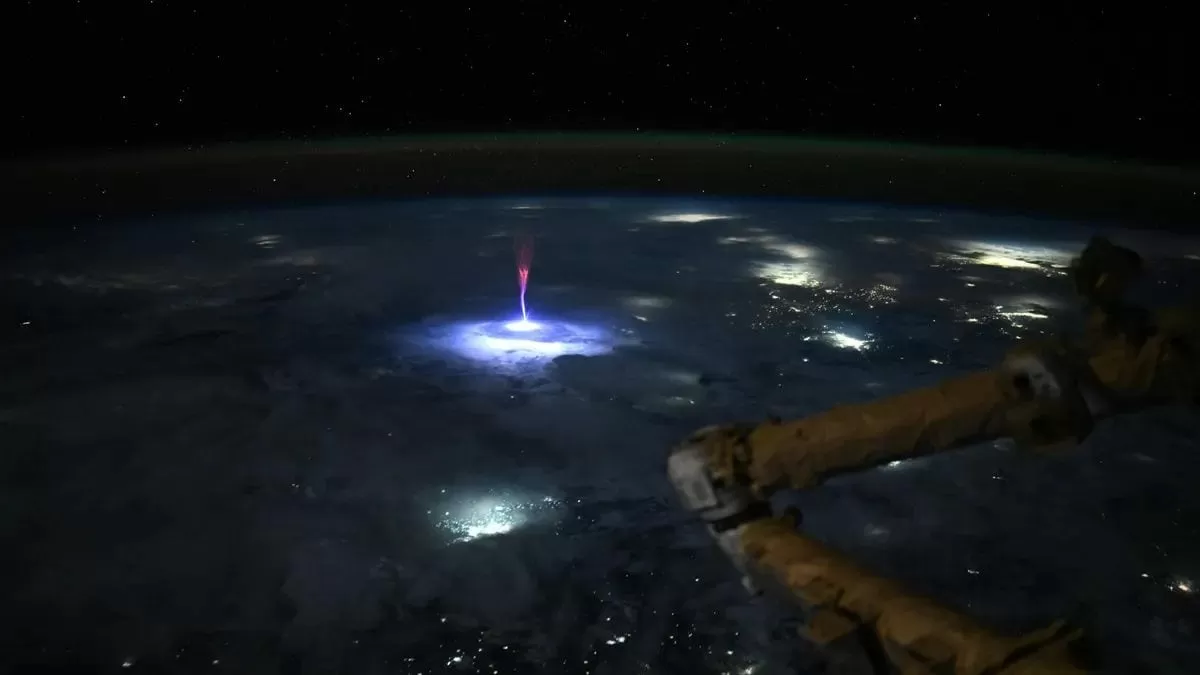In a rare and awe-inspiring celestial event, NASA astronaut Nichole “Vapor” Ayers captured a stunning image of a red sprite lightning phenomenon from the International Space Station. The image, which shows the vivid red sprite lightning flaring above a thunderstorm across Mexico and the southern United States, has captured the attention of people all over the world.
The red sprite lightning, also known as “space lightning”, is a type of electrical discharge that occurs high above thunderstorms. It is a rare phenomenon that is difficult to capture, making Ayers’ image all the more remarkable. The image not only showcases the beauty of this natural occurrence, but also highlights the importance of orbital observation and NASA’s citizen-science initiative, Spritacular.
NASA’s Spritacular initiative was launched in 2019 with the aim of collecting public photos of transient luminous events (TLEs) such as red sprite lightning. TLEs are short-lived, upper atmospheric optical phenomena that are often associated with thunderstorms. They include red sprites, blue jets, and elves, which are all difficult to observe from the ground. By collecting images of these events from the public, NASA is able to gather valuable data and insights that can help scientists better understand these elusive phenomena.
The image captured by Ayers is a testament to the success of the Spritacular initiative. It not only showcases the beauty of red sprite lightning, but also highlights the importance of citizen science in advancing our understanding of the natural world. By involving the public in scientific research, NASA is able to gather a wealth of data that would not be possible with traditional methods.
The image also serves as a reminder of the incredible vantage point that the International Space Station provides. Orbiting 250 miles above the Earth, the ISS offers a unique perspective on our planet and the events that occur on it. From this vantage point, astronauts are able to capture images and data that would not be possible from the ground. This is why orbital observation is crucial in advancing our understanding of the Earth and its natural phenomena.
The red sprite lightning captured by Ayers is just one example of the many wonders that can be observed from the ISS. From the Northern Lights to hurricanes and wildfires, the ISS provides a platform for scientists to study and monitor these events in real time. This information is crucial in helping us better understand our planet and how it is changing.
The image captured by Ayers also serves as a reminder of the bravery and dedication of NASA astronauts. These men and women risk their lives to push the boundaries of human exploration and expand our knowledge of the universe. Their work on the ISS is crucial in advancing our understanding of the Earth and its place in the cosmos.
In conclusion, the image captured by NASA astronaut Nichole “Vapor” Ayers of the red sprite lightning phenomenon is a stunning reminder of the beauty and complexity of our planet. It also highlights the importance of orbital observation and citizen science in advancing our understanding of the natural world. As we continue to explore and study the universe, let us not forget the crucial role that NASA and its astronauts play in this endeavor.

